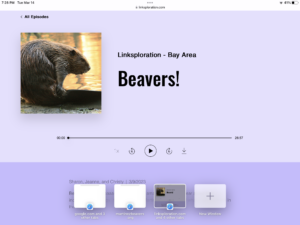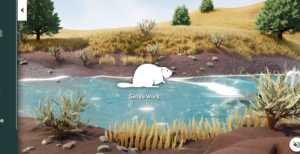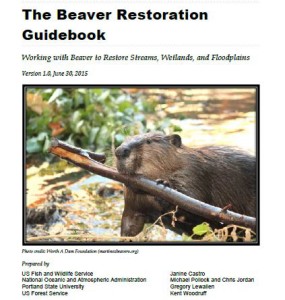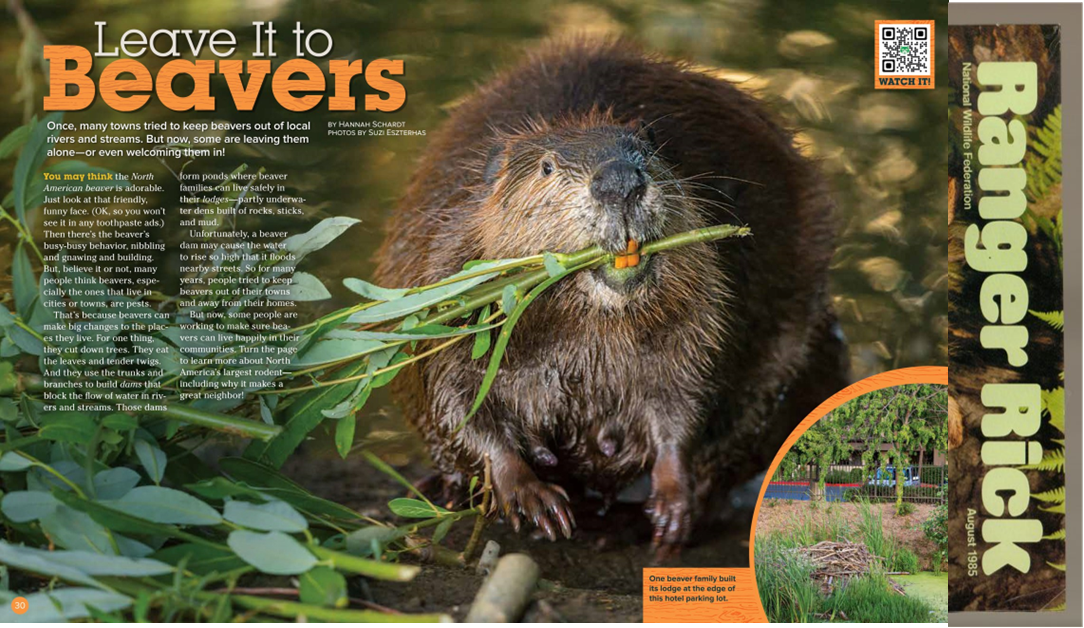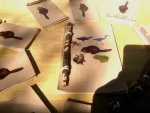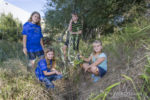Today I have a pair of schizophrenic beaver news stories to ‘catch up on’. So we will go from the sublime to the ridiculous really fast,. Let’s start with north central Washington where beaver dams are considered SO helpful, a bunch of people are building them.
Human-built ‘beaver dams’ restore streams
 Beavers are a critical asset in Washington, assuring that healthy riparian zones are maintained, especially in the dry climate east of the Cascades. Beaver dams and ponds support native vegetation and wetlands along streams, trap sediment, recharge groundwater, and improve water quality. Over the last two centuries, these benefits have been lost in many watersheds, following human development, beaver removal, channel deepening, and other impacts.
Beavers are a critical asset in Washington, assuring that healthy riparian zones are maintained, especially in the dry climate east of the Cascades. Beaver dams and ponds support native vegetation and wetlands along streams, trap sediment, recharge groundwater, and improve water quality. Over the last two centuries, these benefits have been lost in many watersheds, following human development, beaver removal, channel deepening, and other impacts.
n 2015, the Okanogan Highland Alliance (OHA) was awarded a grant to restore a reach of Myers Creek, through Ecology’s Water Quality Financial Assistance Program. In the 1990s, Myers Creek was damaged in a major rain-on-snow event, which caused unusually high stream flows, deepening the creek, leaving vertical cut banks, and draining nearby wetlands.
 Where beaver ponds had once provided grade control and covered large areas of the floodplain, the now-drier soils began to favor invasive plant species. The understory is now dominated by reed canarygrass (Phalaris arundinacea) and Canada thistle (Cirsium arvense), further suppressing growth of native sedge and forb species. The only remaining native riparian species still easily found in the project area is gray alder (Alnus incana), with a few isolated willow (Salix spp.) plants.
Where beaver ponds had once provided grade control and covered large areas of the floodplain, the now-drier soils began to favor invasive plant species. The understory is now dominated by reed canarygrass (Phalaris arundinacea) and Canada thistle (Cirsium arvense), further suppressing growth of native sedge and forb species. The only remaining native riparian species still easily found in the project area is gray alder (Alnus incana), with a few isolated willow (Salix spp.) plants.
Developed by Michael Pollock (NOAA) and colleagues, BDAs offer a low-cost, simple, and easily scalable technique  for mimicking beaver dams. They reduce stream velocity, induce lateral channel migration, and cause rapid aggradation of the streambed, which reconnects the floodplain so it can once again support riparian vegetation.
for mimicking beaver dams. They reduce stream velocity, induce lateral channel migration, and cause rapid aggradation of the streambed, which reconnects the floodplain so it can once again support riparian vegetation.
The long-term vision for BDA projects is that beaver will once again maintain dams to provide local grade control, floodplain connection, and wetland habitats to support a diverse flora and fauna. Sometimes partners like the Okanogan Highlands Alliance, the Washington Department of Ecology, along with many others, just have to help give them the boost they need.
And if you try real hard the good fairy will make you a REAL beaver dam and you will get real beavers to take care of you with no grant funding needed at all! Amazing huh? Maybe these stories DO go together after all. Maybe it’s a reverse case of “Love the sinner hate the sin” kinda thing. Only what gets loved is the dams, and what gets hated is the hero that makes them.
Contrast this story with Martin county in Minnesota where they hate beavers SO much they are raising the bounty on their heads from 20 per trapped beaver to FIFTY,
County tackles gnawing problem
FAIRMONT — The beaver population in Martin County has been on the rise, causing no end of trouble for area farmers.
In December, Martin County commissioners increased the county’s beaver bounty from $20 to $50 per beaver, in an effort to alleviate the issue. According to drainage administrator Michael Forstner, this was necessary because of the low value currently in the market for the pelt.
Paul Grussing, a local trapper utilized by the county, explained the issue and was able to share some insight into the trapping process.
“The previous bounty was $20 for each beaver; at that amount it costs trappers money to trap them,” he said. “Trappers refused to trap them, resulting in a large increase in the population of beavers in Martin County. Traps and lures for beaver trapping are expensive, plus it is hard work.
“The population is quite high in our county, and beavers tend to build their dams in hard to reach areas. Most of my calls begin in September when farmers start their harvest. They see damage to their crops and dams being built.
You poor little snowflake, trapper Paul. Killing beavers is SO hard (and damp) and it’s winter ya know? Good thing you have the county supervisors by the short and curlies and can pry 50 bucks out of their palms for each beaver you take. That means you get several hundred per family. You’re RICH! Hmmm, come to think of it, maybe the bounty doesn’t count sub adults so you just leave the kits to die.
I really, really hate Martin County.
As far as Martin County is concerned, only beavers trapped within a drainage system or within one-quarter mile of a drainage system outlet will be accepted for the bounty,
And tell me, wise ones of Martin county, how, exactly, will you know?

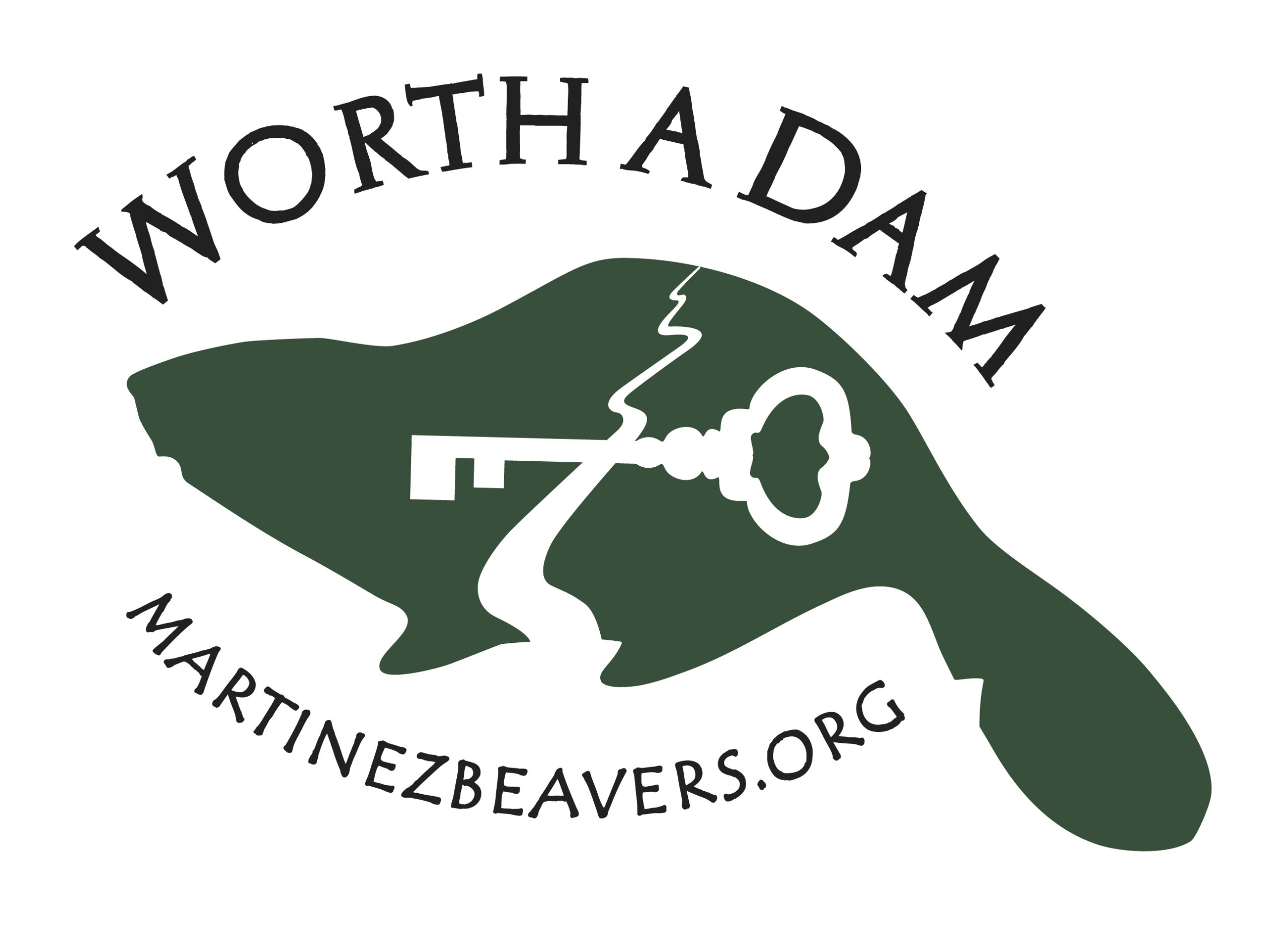

 I thought a lot about yesterday’s news, and was able to have a 20 minute conversation with Dr. Jimmy Taylor at APHIS in Oregon about it. What I learned is that the beaver trapping done by Wildlife Service is only a small portion of the entire trapping of beavers done in the state. This morning I hunted around and tried to figure it out for myself. For starters about a third of the state is individually held private land, which means any landowner can dispose of ANY BEAVER any way he likes, without a permit or agency involvement.
I thought a lot about yesterday’s news, and was able to have a 20 minute conversation with Dr. Jimmy Taylor at APHIS in Oregon about it. What I learned is that the beaver trapping done by Wildlife Service is only a small portion of the entire trapping of beavers done in the state. This morning I hunted around and tried to figure it out for myself. For starters about a third of the state is individually held private land, which means any landowner can dispose of ANY BEAVER any way he likes, without a permit or agency involvement. The remaining third of the land is divided up by municipalities, state land, etc. These places can use any wildlife control operator who is licensed and approved by the state- either a private WCO or Wildlife Services for their trapping. Case by case permits are not required.
The remaining third of the land is divided up by municipalities, state land, etc. These places can use any wildlife control operator who is licensed and approved by the state- either a private WCO or Wildlife Services for their trapping. Case by case permits are not required.  PORTLAND — The U.S. government will temporarily halt a little-known beaver killing program in Oregon, where the rodent is the state animal, appears on the state flag and is the mascot of Oregon State University.
PORTLAND — The U.S. government will temporarily halt a little-known beaver killing program in Oregon, where the rodent is the state animal, appears on the state flag and is the mascot of Oregon State University. In a letter released Wednesday by a coalition of environmental groups, the government said it will further study whether the actions violate the Endangered Species Act.
In a letter released Wednesday by a coalition of environmental groups, the government said it will further study whether the actions violate the Endangered Species Act. Whoo hoo? A moratorium on beaver trapping! I’m not exactly sure what this means for all the beavers in Oregon, but you can bet I’m going to find out. (In California it wouldn’t mean a heck of a lot because there are plenty of folks that trap beaver besides Wildlife Services). Our counting usually shows APHIS only counts for a third of all the beavers depredated in the state. I’ve asked if Oregon is different and will let you know the answer. For now be grateful that this puts SQUARELY in the public eye the important relationship between killing beavers and harming salmon.
Whoo hoo? A moratorium on beaver trapping! I’m not exactly sure what this means for all the beavers in Oregon, but you can bet I’m going to find out. (In California it wouldn’t mean a heck of a lot because there are plenty of folks that trap beaver besides Wildlife Services). Our counting usually shows APHIS only counts for a third of all the beavers depredated in the state. I’ve asked if Oregon is different and will let you know the answer. For now be grateful that this puts SQUARELY in the public eye the important relationship between killing beavers and harming salmon. Beavers are “nature’s engineers,” and their complex dams form deep pools in bubbling streams that shield young salmon and give them a resting place to fatten up as they migrate to the Pacific Ocean, said Andrew Hawley, a staff attorney with the Western Environmental Law Center.
Beavers are “nature’s engineers,” and their complex dams form deep pools in bubbling streams that shield young salmon and give them a resting place to fatten up as they migrate to the Pacific Ocean, said Andrew Hawley, a staff attorney with the Western Environmental Law Center. Beavers are some of the most misunderstood animals. By nature, the critters gnaw at trees in order to fell them, so that they can create dams…
Beavers are some of the most misunderstood animals. By nature, the critters gnaw at trees in order to fell them, so that they can create dams…  They should also know that stealing other peoples titles is frowned upon in the literary community. (Check out the subtitle under Eager). Like I said, other than the Peter Bush article I haven’t seen this headline used a single time in an entire decade, and now that the book is officially for sale on Amazon someone else suddenly ‘thought’ of it.
They should also know that stealing other peoples titles is frowned upon in the literary community. (Check out the subtitle under Eager). Like I said, other than the Peter Bush article I haven’t seen this headline used a single time in an entire decade, and now that the book is officially for sale on Amazon someone else suddenly ‘thought’ of it. Judy and I talked about how this was likely the other part of the same family, leaving the danger zone and carrying on. I also suggested that there was a chance that the beaver they are still seeing in the area is a yearling they never knew was part of the family, and that the parents had brought the kit to the new zone. It would be pretty unusual for a parent to abandon a kit, I thought. But not so unusual to have a family member you never accounted for. I told her that one year we spent an entire summer SURE that we had two kits, until another one suddenly ‘appeared’ in August. Beavers don’t always show their hand.
Judy and I talked about how this was likely the other part of the same family, leaving the danger zone and carrying on. I also suggested that there was a chance that the beaver they are still seeing in the area is a yearling they never knew was part of the family, and that the parents had brought the kit to the new zone. It would be pretty unusual for a parent to abandon a kit, I thought. But not so unusual to have a family member you never accounted for. I told her that one year we spent an entire summer SURE that we had two kits, until another one suddenly ‘appeared’ in August. Beavers don’t always show their hand.





